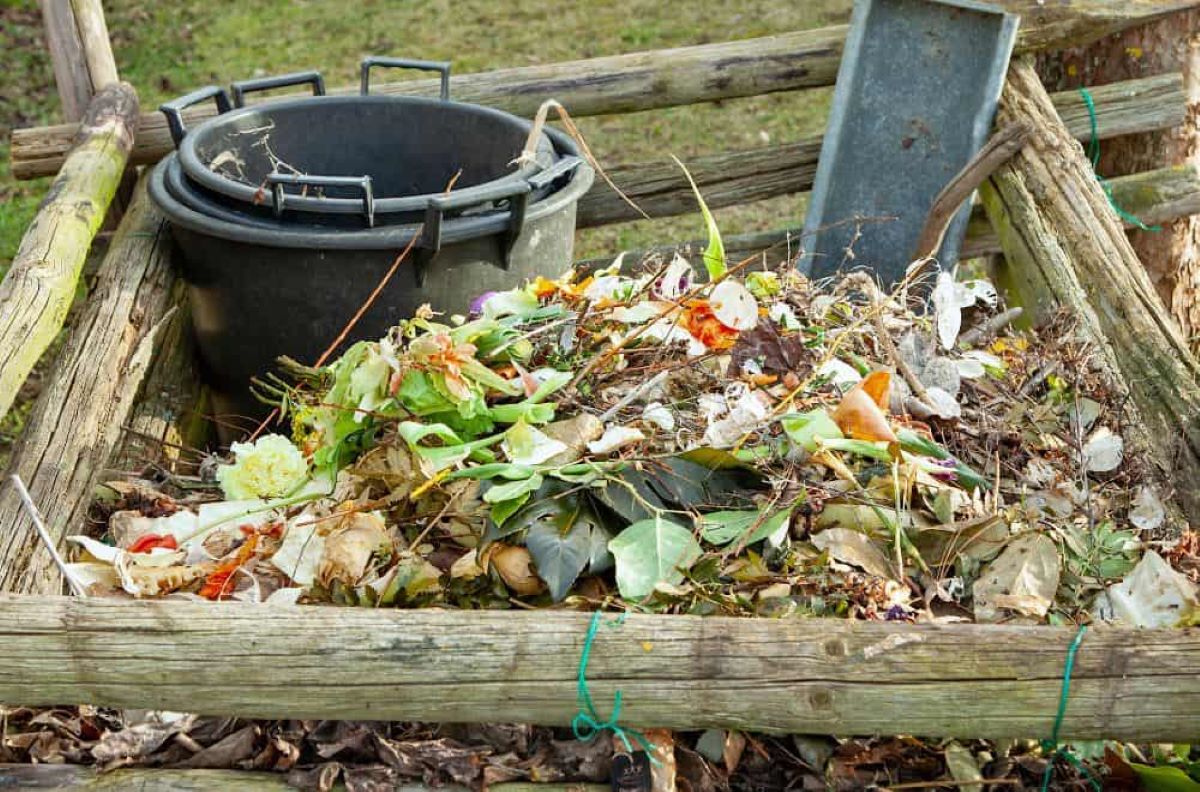Home>Types of Gardening>Ornamental Gardening>How Long Does It Take For Mammoth Sunflowers To Grow


Ornamental Gardening
How Long Does It Take For Mammoth Sunflowers To Grow
Modified: January 22, 2024
Discover the timeline for growing mammoth sunflowers with our comprehensive guide. Perfect for your ornamental gardening needs.
(Many of the links in this article redirect to a specific reviewed product. Your purchase of these products through affiliate links helps to generate commission for Chicagolandgardening.com, at no extra cost. Learn more)
Table of Contents
Introduction
Mammoth sunflowers, with their impressive height and large vibrant blooms, are a popular choice for ornamental gardens. These towering plants can reach heights of up to 12 feet or more, creating a striking focal point in any landscape. If you’re considering growing mammoth sunflowers in your own garden, you may be wondering how long it takes for them to grow from seed to full maturity.
The answer to this question depends on several factors, including the growing conditions, the variety of sunflower, and the care provided. In general, mammoth sunflowers have a relatively fast growth rate compared to other plants, and with proper care, you can expect to see impressive results in a relatively short period of time.
Throughout this article, we’ll explore the different stages of growth for mammoth sunflowers and provide an estimate of the time it takes for each stage to complete. By understanding these stages, you’ll gain valuable insights into when to expect your sunflowers to reach their full potential.
Factors Affecting Growth Rate
The growth rate of mammoth sunflowers can be influenced by various factors. Understanding these factors is crucial in order to create optimal conditions for your sunflowers to thrive.
1. Climate: Mammoth sunflowers are native to regions with a warm climate and plenty of sunlight. They prefer temperatures between 70-82°F (21-28°C) during the day and slightly cooler temperatures at night. If you live in a cooler climate, you can still grow mammoth sunflowers, but you may need to start them indoors or provide some form of protection.
2. Soil Quality: Sunflowers thrive in well-draining soil that is rich in organic matter. Before planting, amend your soil with compost or well-rotted manure to improve its fertility and drainage. The ideal soil pH for sunflowers is between 6.0-7.5.
3. Watering: Adequate watering is essential for the growth and development of mammoth sunflowers. While sunflowers are fairly drought-tolerant, they still require consistent moisture, especially during the germination and flowering stages. Water deeply once or twice a week, making sure the soil is evenly moist. Avoid overwatering, as this can lead to root rot.
4. Fertilization: To promote healthy growth, it’s beneficial to fertilize your sunflowers. Before planting, incorporate a balanced fertilizer into the soil. Once the plants have established, you can provide additional nutrients by using a water-soluble fertilizer every two to three weeks during the growing season.
5. Pest and Disease Control: Like any other plant, mammoth sunflowers can be susceptible to pests and diseases. Common pests that may affect sunflowers include aphids, caterpillars, and slugs. Regularly monitor your plants and take appropriate measures, such as using organic insecticides, to control pests. Diseases such as powdery mildew and downy mildew can also be a concern. Providing good air circulation and avoiding overhead watering can help prevent these issues.
By considering these factors and providing optimal growing conditions, you can enhance the growth rate of your mammoth sunflowers and ensure healthy and robust plants.
Germination Stage
The germination stage is the first step in the growth process of mammoth sunflowers. This stage begins when the seeds are planted and ends when the seedlings emerge from the soil.
To ensure successful germination, start by selecting high-quality mammoth sunflower seeds. Soak the seeds in water overnight to help soften the outer coating and improve germination rates.
Prepare the soil by loosening it with a garden fork or tiller to a depth of about 6-8 inches. Plant the sunflower seeds about 1-2 inches deep, spacing them 6-12 inches apart, depending on the desired final size of the plants.
During the germination stage, it’s essential to provide the right environmental conditions. Keep the soil consistently moist, but not waterlogged, throughout this stage. You can cover the planting area with a plastic wrap or a cloche to create a greenhouse-like environment and promote faster germination. Be sure to remove the covering once the seedlings start to emerge.
The germination time for mammoth sunflowers is typically around 7-14 days, but it can vary depending on factors such as soil temperature and moisture. Keep an eye on the soil and provide the necessary water to prevent it from drying out.
Once the seedlings emerge, they will begin to develop their first set of true leaves, which are different from the initial seed leaves. At this point, you can thin out the seedlings, leaving the strongest ones spaced according to the plant’s final size.
During the germination stage, it’s important to protect the seedlings from potential threats such as slugs, snails, and birds. You can use physical barriers or apply organic pest control methods to keep these threats at bay.
By providing the right conditions and care during the germination stage, you’ll set your mammoth sunflowers on the path to strong and healthy growth.
Vegetative Stage
The vegetative stage is a critical period in the growth of mammoth sunflowers. During this stage, the plants focus on developing a strong root system and growing tall before transitioning into the flowering stage.
Once the seedlings have emerged and established their first set of true leaves, they will enter the vegetative stage. During this stage, sunflowers will undergo rapid growth, with the main stem elongating and the leaves expanding in size.
It is important to ensure that your sunflowers receive adequate sunlight during the vegetative stage. These plants thrive in full sun, which means they need at least six hours of direct sunlight per day. If your garden doesn’t receive enough sunlight, consider using reflective materials or positioning the plants in a way that maximizes their exposure to sunlight.
Watering remains crucial during the vegetative stage. Keep the soil consistently moist but not waterlogged. Sunflowers have a deep root system, so it’s beneficial to water deeply, allowing the water to penetrate the soil and reach the roots.
Weeds can compete with sunflowers for nutrients and water, so it’s important to regularly weed the garden bed to prevent any unwanted competition. Use caution when weeding around the sunflowers to avoid damaging their shallow root systems.
As the vegetative stage progresses, you may need to provide support for taller sunflowers. Stake or tie the plants to prevent them from bending, especially in windy conditions. This will help the stems grow straight and reduce the risk of breakage.
The vegetative stage typically lasts for about 4-6 weeks, depending on growing conditions. During this time, it’s essential to monitor your sunflowers for any signs of pests or diseases. Early detection and treatment can help prevent damage and ensure healthy growth.
By providing ample sunlight, appropriate watering, and necessary support, your mammoth sunflowers will thrive in the vegetative stage, setting the stage for magnificent blooms in the next phase of their growth.
Flowering Stage
The flowering stage is perhaps the most anticipated phase of mammoth sunflowers’ growth. This is when the plants start producing their iconic, vibrant blooms, adding a burst of color and beauty to any garden.
During the flowering stage, the main focus for sunflowers is producing flowers and attracting pollinators. As the plants continue to grow taller, they will form multiple lateral branches that will bear the flower buds.
The sunflower blooms themselves are composed of hundreds of individual flowers, which are arranged in a spiral pattern. The outer ring of flowers, called ray florets, are the showy petals we typically associate with sunflowers, while the central disc florets produce the seeds.
To ensure optimal flowering, continue to provide your sunflowers with full sun exposure. Sunflowers require at least six hours of direct sunlight each day to produce robust and vibrant blooms. Lack of sunlight can result in smaller or fewer flowers.
Watering is still important during the flowering stage, as sunflowers need consistent moisture to produce healthy blooms. Be sure to water deeply, allowing the water to reach the roots. Avoid overhead watering, as wet flower heads can attract diseases.
Another critical aspect of the flowering stage is pollination. Sunflowers are mainly pollinated by bees, butterflies, and other insects. You can attract these pollinators to your garden by planting other flowering plants nearby or by providing a water source for them. A diverse and vibrant garden ecosystem will encourage pollinators to visit your sunflowers and help with successful pollination.
As the flowers bloom, you may notice them facing east in the morning and gradually following the sun throughout the day, a behavior known as heliotropism. This allows the flowers to maximize their exposure to sunlight for optimal growth and seed production.
The duration of the flowering stage usually lasts for about 2-3 weeks, depending on the variety and growing conditions. Enjoy the beauty of the sunflower blooms during this time, and be sure to capture their magnificence through photography or other artistic means.
By providing the necessary sunlight, water, and pollinator-friendly environment, you will witness your mammoth sunflowers reaching their peak during the flowering stage, creating a stunning display in your garden.
Maturation Stage
The maturation stage is the final phase in the growth cycle of mammoth sunflowers. During this stage, the focus shifts from flower production to seed development, as the sunflower prepares to complete its life cycle.
As the flowers begin to fade and dry out, the seeds start to develop in the center of the flower head. The back of the sunflower head develops a yellow-brown color, and the petals begin to wilt and fall off.
The sunflower seeds will mature and ripen in the head, gradually turning from green to a dark gray or black color. The timing of maturation can vary, but it typically takes around 30-45 days from the start of flowering.
To ensure proper seed development, it’s important to allow the sunflower heads to remain on the stalk until they are fully mature. This allows the seeds to dry out and reach their maximum size. You can determine if the seeds are ready by gently rubbing them with your fingers. If they come off easily and feel hard and dry, they are likely mature.
During the maturation stage, it’s crucial to protect the sunflower heads from birds or other animals that may be attracted to the seeds. Consider covering the heads with a mesh bag or pantyhose to prevent them from being eaten before you have a chance to harvest them.
Once the sunflower heads have fully matured, it’s time to harvest the seeds. Cut the heads from the stalk, leaving a few inches of stem attached. Hang the heads upside down in a well-ventilated area to finish drying. Once the seeds are completely dry, you can gently remove them from the heads and store them in a cool, dry place for future use or as a delicious snack for yourself or wildlife.
During the maturation stage, it’s essential to monitor the weather conditions. If there is a risk of frost or heavy rainfall, consider covering the sunflower heads to protect them from damage. Additionally, make sure to mark your calendar or set a reminder to check on the seed development progress to ensure you harvest them at the right time.
The maturation stage is the culmination of the mammoth sunflower’s growth journey, as it completes its lifecycle by producing mature seeds. Enjoy the beauty of the drying sunflower heads and take pride in the harvest of your own homegrown sunflower seeds.
Harvesting Mammoth Sunflowers
Harvesting mammoth sunflowers is an exciting and rewarding task that allows you to enjoy the fruits of your labor. To ensure a successful harvest, it’s important to know the right time to harvest and the proper techniques to maximize yield and seed quality.
The first indication that a sunflower is ready for harvest is when the back of the flower head turns brown or yellow and the petals begin to wilt and fall off. This is a sign that the seeds inside have matured and are ready to be harvested.
When harvesting mammoth sunflowers, begin by cutting the flower heads from the stalk using sharp pruning shears or a serrated knife. Leave a few inches of stem attached to the head to make handling and drying easier.
After cutting the flower heads, you have two options for drying and harvesting the seeds:
1. Air Drying: Hang the sunflower heads upside down in a well-ventilated area, such as a garage or a covered porch. Allow them to dry naturally for a couple of weeks. Once the seeds are fully dry, gently rub the heads to separate the seeds. Remove any remaining debris or chaff from the seeds before storing them.
2. Screen Drying: Place the sunflower heads on a screen or a mesh surface, allowing air to circulate around them. Turn the heads regularly to ensure even drying. Once the heads and seeds are completely dry, rub them gently to detach the seeds from the head. Use a sieve or a fan to separate the seeds from any remaining debris.
Regardless of the drying method you choose, it’s important to ensure that the seeds are fully dry before storing them. Damp seeds are prone to mold and can spoil the entire batch.
Once the seeds are separated, store them in a cool, dry place, such as an airtight container or a resealable bag. Proper storage will help maintain the quality and viability of the seeds for future use or consumption.
While harvesting the seeds is the primary goal, don’t forget to enjoy the beauty of the sunflower heads themselves. You can use them as decorative elements in arrangements or save them for crafting projects.
By following these harvesting techniques, you can ensure a successful and bountiful harvest of mammoth sunflower seeds, providing you with a supply of seeds for future planting and the opportunity to share the beauty of these magnificent flowers with others.
Conclusion
Mammoth sunflowers are captivating additions to any ornamental garden, with their impressive height and vibrant blooms. Understanding the growth stages and factors that influence their growth rate is key to successfully cultivating these stunning plants.
From the germination stage to the maturation stage, mammoth sunflowers go through a remarkable transformation. Starting with the germination stage, where the seeds sprout and establish seedlings, to the vegetative stage, where the plants develop strong stems and leaves. Then, the flowering stage brings forth the iconic blooms, attracting pollinators and adding beauty to your garden. Finally, the maturation stage sees the development of mature seeds.
To support healthy growth, consider factors such as climate, soil quality, watering, fertilization, and pest control. By providing optimal conditions, mammoth sunflowers will thrive and reach their full potential.
Harvesting the mature sunflower heads is a rewarding experience. Properly drying and storing the seeds ensures their viability for future planting or as tasty snacks.
As you embark on your journey to grow mammoth sunflowers, appreciate the beauty and awe-inspiring growth of these remarkable plants. Take the time to enjoy the various stages and the end result of vibrant blooms and plentiful seeds.
Remember, gardening is a journey that requires patience and care. With knowledge and dedication, you can successfully grow and harvest mammoth sunflowers, creating a stunning display of nature’s beauty in your own backyard.







